I’ve put off writing the last couple of post for the trip. Maybe because I’m afraid my writing just can’t do it justice. Or maybe because the trip will really be over once these are in the books. Either way, we’ve been back for a few weeks now and it’s time I get these written and published.
Yellowstone National Park… If we’ve learned nothing else on our travels, we have learned that photos just don’t do places justice. The beauty can’t be captured in a photo, even a well edited or perfectly timed one.

And there’s so much more to it than just the beauty. Like the experience of walking through the Mud Volcano and smelling all the sulfer… And then hearing one kid say how bad it stinks, followed by the mom replying, “I’m used to it, I raised 4 boys.”
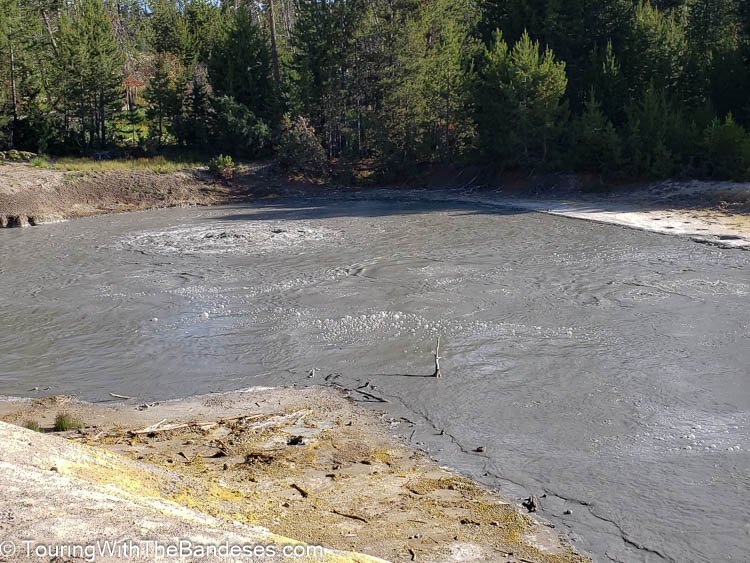
But beyond the beauty and the humor of the tourists, there’s the science. OK, in transparency, one of my top two CliftonStrengths is Learning. Are you surprised?
So let’s get a little nerdy, err scientific, for a moment because so much of Yellowstone is about the science. And that’s despite some awesome totally unsciency place names like Dragon’s Mouth.
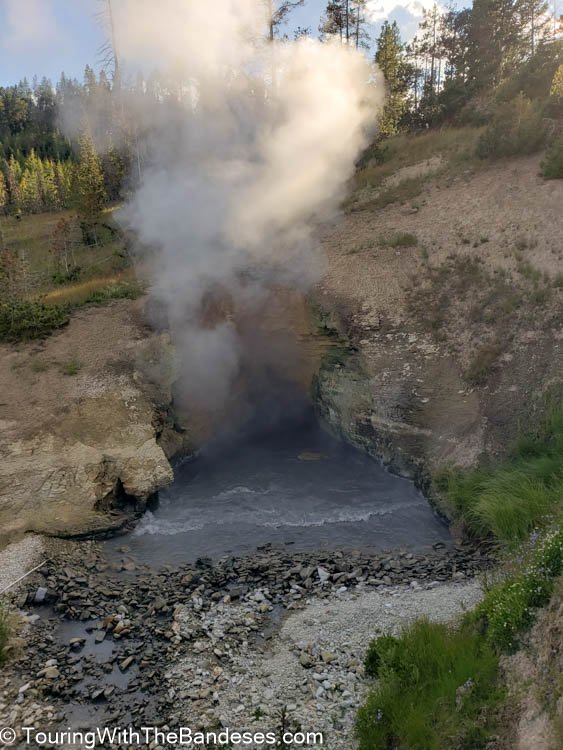
First up, those amazing organisms called thermophiles. Thermophiles are single-celled organisms that thrive in extremely high temperatures (thermo = heat, phile = lover of). They are key to why Yellowstone looks different than almost any other place on earth.
Another key sciency thing we want to keep in mind is the gas hydrogen sulfide, aka sulfur. That’s the gas that gives the rotten egg smell we all know and love… at least, if you love hotsprings, you learn to tolerate the smell.
Looking at the chalky mud color made me wonder why it looked that way. Was it a type of dirt or a certain chemical?
Turns out, there’s a series of things happening. First, those crazy thermophiles. These guys use the hydrogen sulfide gasses (the stinky stuff) as a favorite meal. I mean, if rotten eggs are your thing… As they consume the gasses, the gasses then convert to sulfuric acid. That acid breaks up the rocks and turns them into the muddy clay we see. Science is cool!
And then you go from seeing all that gray mud to seeing these stunning prismatic pools.
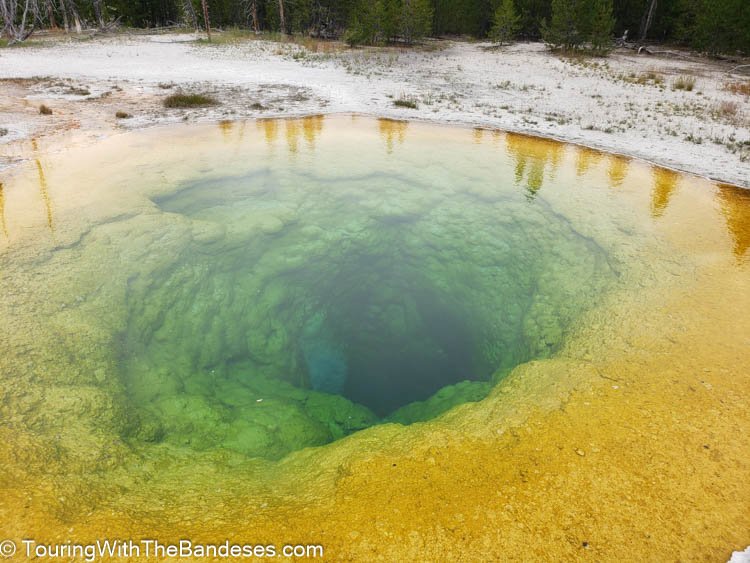
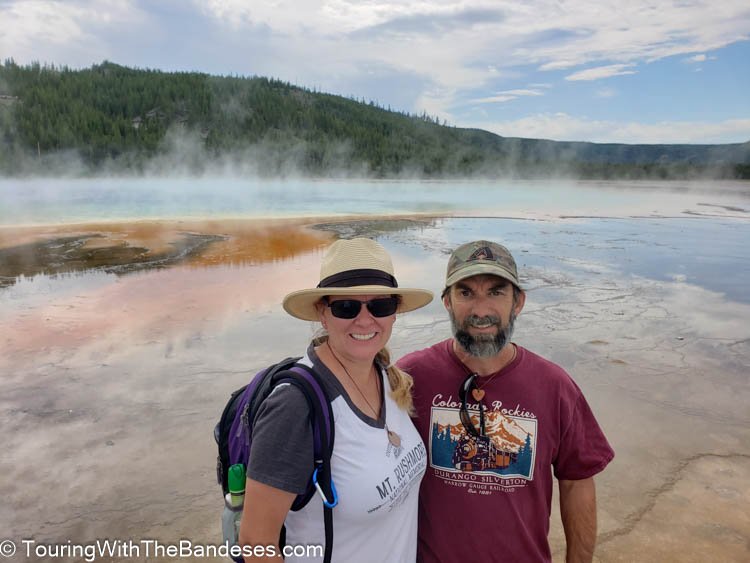
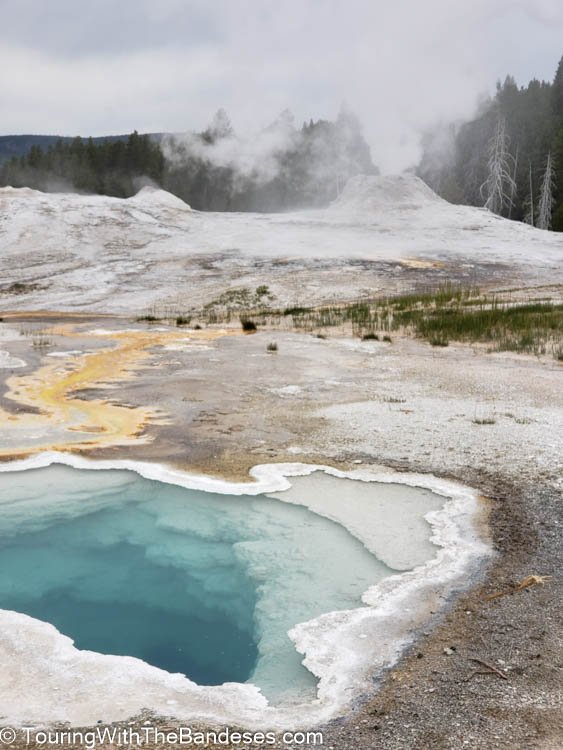
These colorful pools look like something out of an Alice in Wonderland world but they really exist. And once again, we have the thermophiles to thank for it. As the heated water comes up through the ground, it will be it’s deepest blue. But as it mixes with cooler water close to the surface, different thermophiles with different colors will thrive. And the results are just breathtaking.
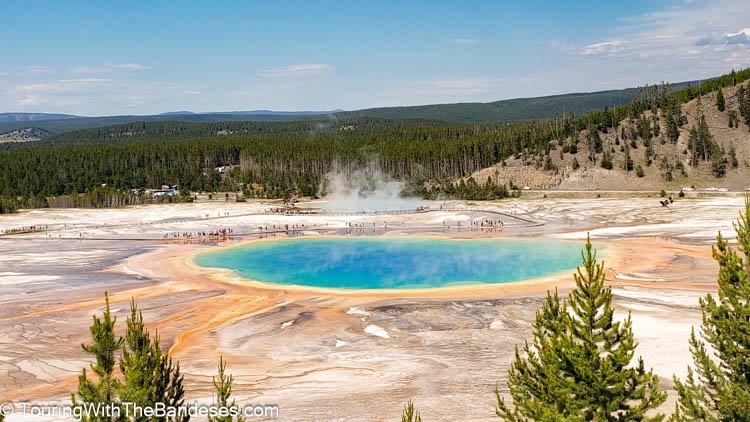
OK, Science class over.
Lions and Tigers and Bears, Oh My!
OK, there might not be lions and tigers in Yellowstone but you can’t talk about Yellowstone without talking about the wildlife. From bison and bears to mountain goats and wolves, Yellowstone is often called the American Serengeti for it’s diverse and plentiful wildlife.
If you don’t see a bison on your trip to Yellowstone, you never left your hotel. They are EVERYWHERE!
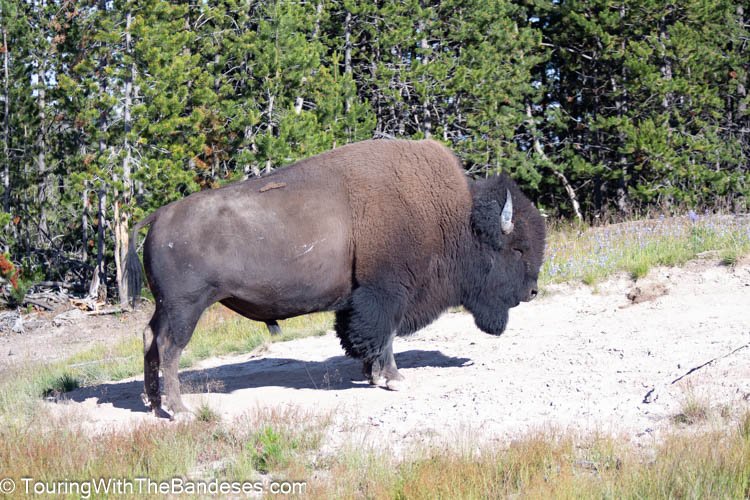
We managed not to have any full on road stops due to the lumbering beasts but we did have a few close encounters.
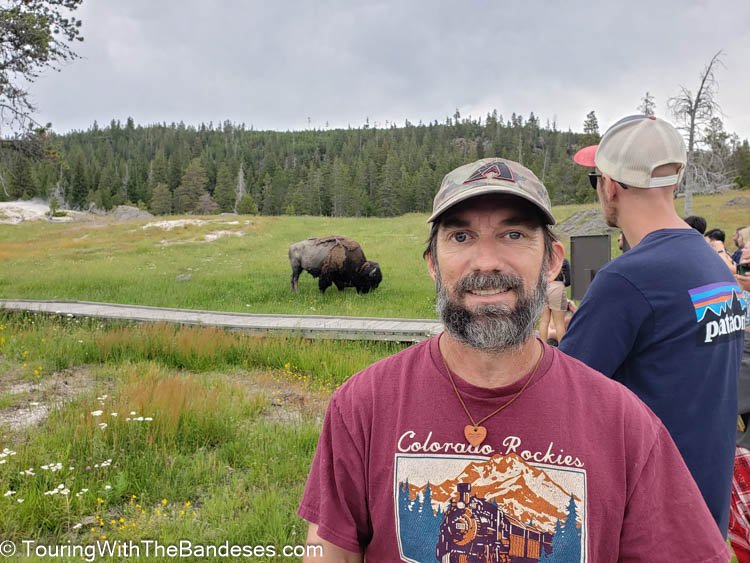
Twice, while riding on the motorcycle, we had bison using the opposite lane as a convenient trail. One of those times was a single guy, the other was a whole bison family and momma didn’t look happy with all the cars on the other side. We gave her plenty of room before passing. You might drive away unscathed if a bison hits your car but I don’t think we’d be that lucky if she decided to nudge the bike…
Another time a bison was hanging out near Old Faithful. We all took our turns getting selfies but also giving him his space, until he decided to cross the trail. A few of the tourists thought that was a good opportunity to get a close up. Mr Bison gave one of them a gentle nudge to let him know he wanted his space but no one was hurt. I’m sure that guy has a great story to tell, good thing he’s around to tell it.
Traveling Yellowstone by Motorcycle
The motorcycle was a great and fun way to travel the over 140 miles of looped roads around Yellowstone but it also means not having the camera at the ready for key moments.
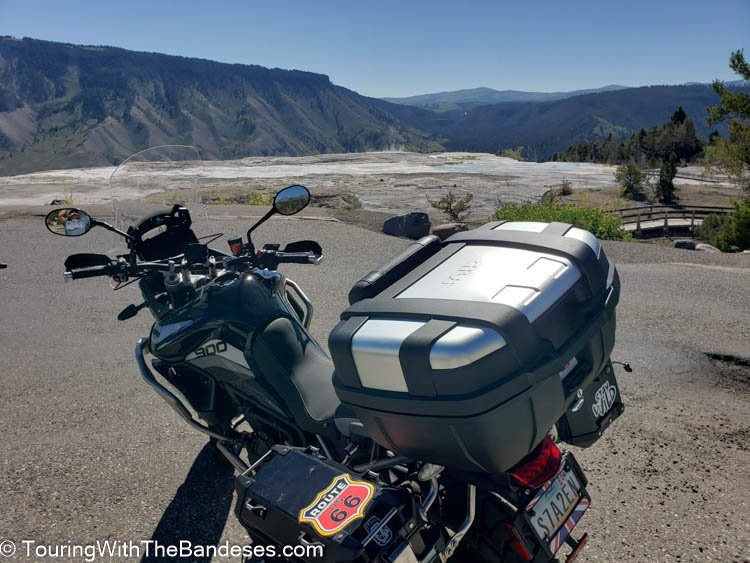
Like when the wolf (Jeff says it was a coyote) jumped from a cliff right into the road in front of us before narrowly missing the car coming in the opposite direction and heading down the other side. Or the poor elk that was stuck in the median near Mammoth Hot Springs and couldn’t get across without tourists blocking his safe exit. He finally got by but I bet he won’t make that mistake again.
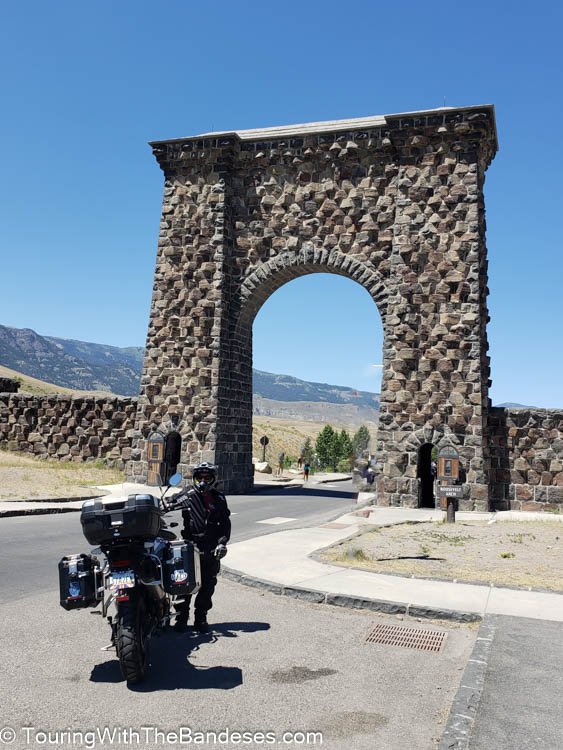
We also took the somewhat challenging 7 mile (some maps say 6, one said 5) Mount Washburn hike hoping to spot some wildlife. While it was a maintained fire road trail, it was rather steep with a 1400 ft elevation gain.
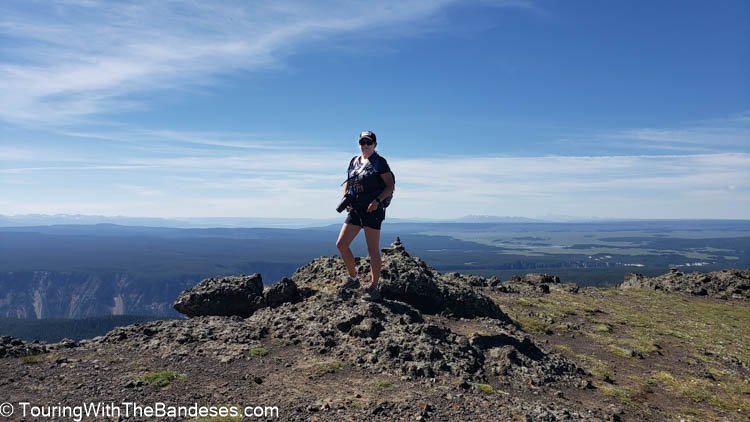
We did get more snow along the hike but almost gave up before reaching the top and getting rewarded with lots of mountain goats hanging about.

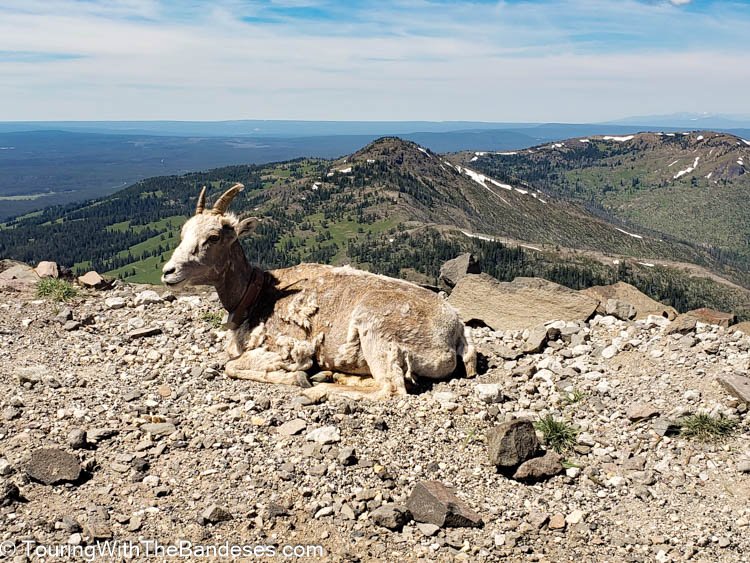

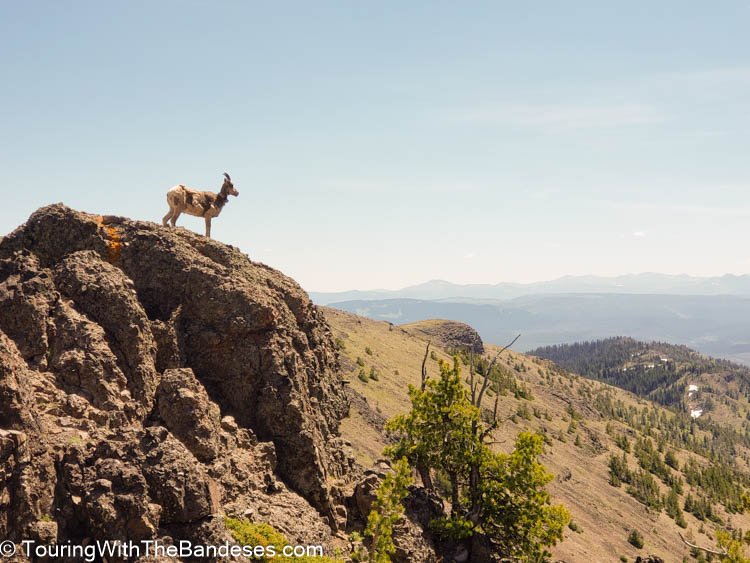
Grand Canyon of the Yellowstone
Coming from the Grand Canyon State, we might have been a little narrow-minded in thinking Grand Canyon National Park was the ONLY Grand Canyon that existed. So we were totally surprised to learn there is a Grand Canyon of the Yellowstone. This canyon is part of the Yellowstone River which is fed by Lake Yellowstone. I mean, is there anything this park doesn’t have???
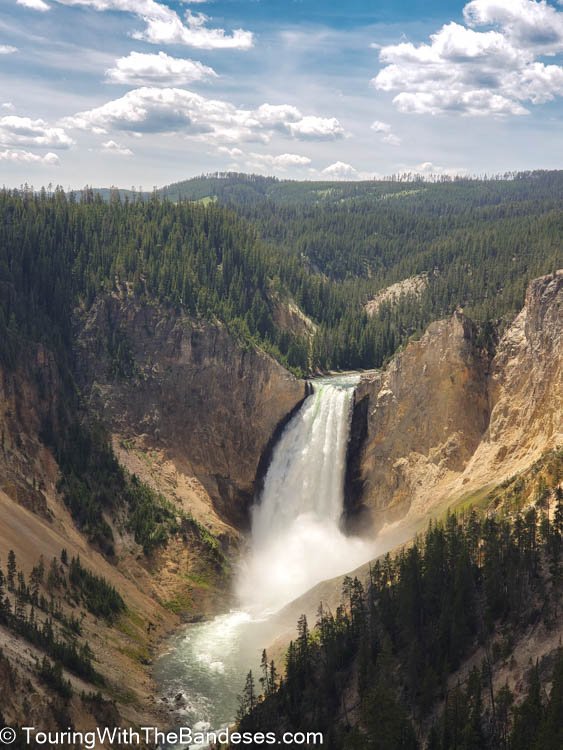
Oh, wait, did I mention that, of the many MANY waterfalls we saw on this trip, the most beautiful were definitely Upper and Lower Falls of Yellowstone River. There are many trails you can take around the canyon and, if you take the North Rim Dr, parking will likely dictate which one you end up taking. We took one to an overlook of the lower falls and got a small taste at the top of Lookout Point. This was enough to encourage us to come back on another day.
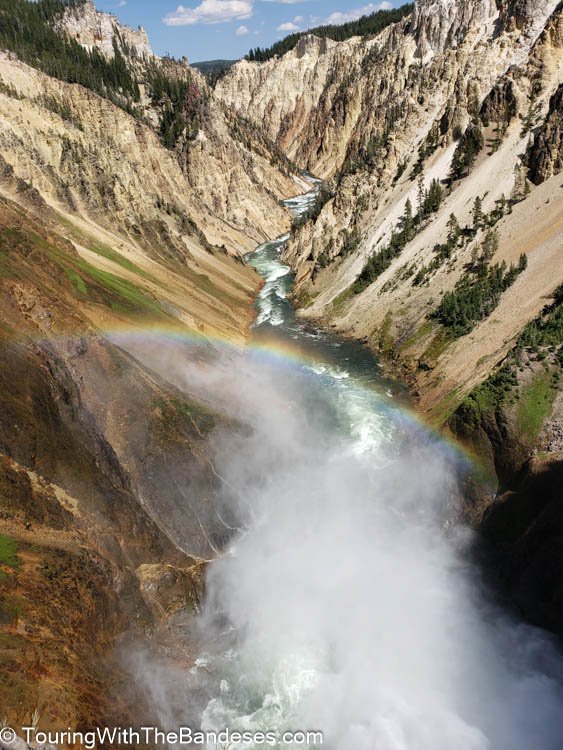
Conversations heard on the trail:
Dad with two young kids to someone coming back up the trail: “Is this a hard hike?”
Hiker coming up the trail: “It’s very steep.”
Second hiker coming up trail: “It’s only steep going up.”
For our second trip, we first hiked down the steep Brink of Lower Falls Trail. While the trail is a very short .7 miles, it is a 300ft elevation change. But the views are worth the effort!
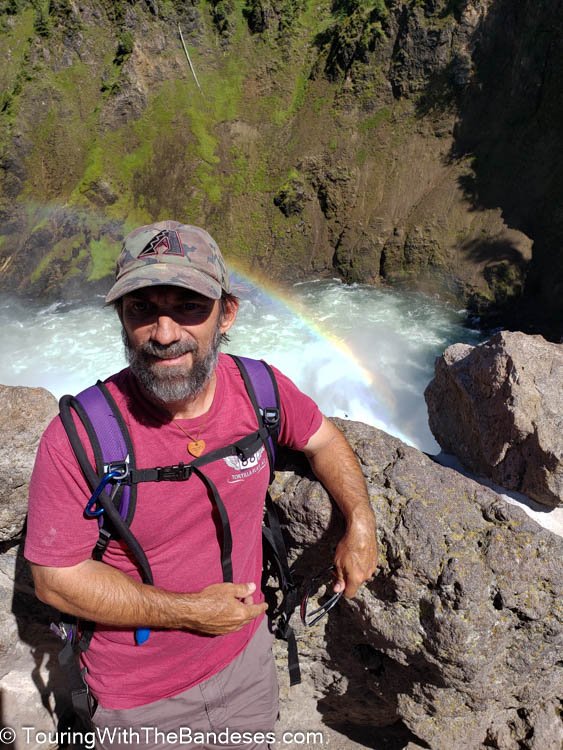
Instead of heading right back, we decided to do the alternate hike long the North Rim Trail out to the Brink of Upper Falls. If Lower Falls were impressive and the most remarkable falls we’d visited on this trip, Upper Falls were extraordinary.
And we came across some evidence that bears, despite still being elusive, really do exist in the park.

Go, Go Geysers!
Now let’s talk about geysers. We’ve all heard of Old Faithful. Yes, you have to go see it because, well, it’s like going to The Cheesecake Factory and NOT ordering cheesecake. But the most impressive thing about Old Faithful, besides the massive crowds it draws, is the fact that it’s the most regular and predictable of all the geysers in Yellowstone.
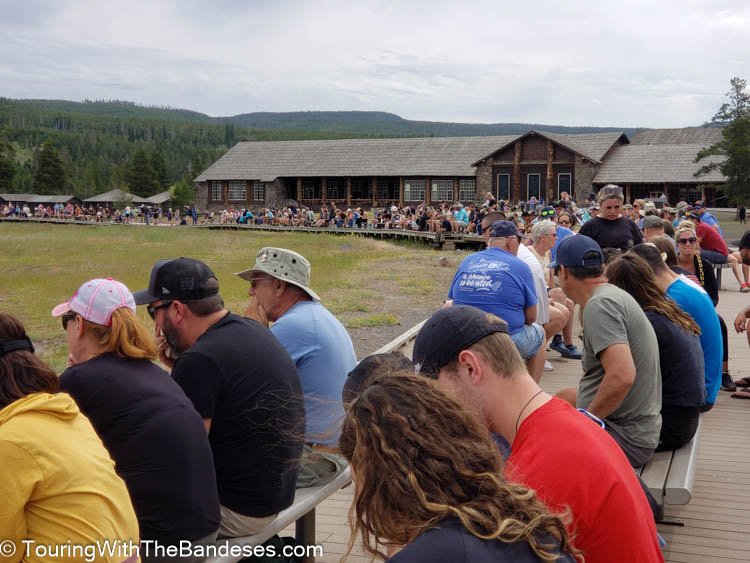
But let’s talk about geysers. There are around 1000 active geysers in the WORLD. Over half of them are located in Yellowstone National Park. And most of those are located in what is called Upper Geyser Basin, the home of Old Faithful. So don’t stop at Old Faithful. Do the super easy Upper Geyser Basin Trail and get treated to more geyser than you can imagine, all with their own personality. So much so that I thought of doing a Senior Class Awards for Geysers: Old Faithful – Most likely to Be On Time.
Best Personality – Grotto Geyser

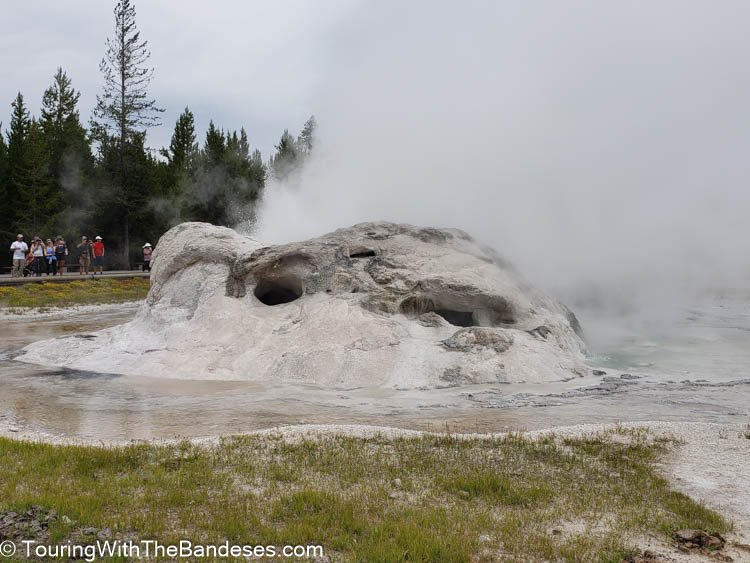
We loved Grotto Geyser for it’s uniqueness and creativity. It wasn’t just a volcano shaped cone that went straight in the air. This guy had some serious personality!
Most Likely to Make an Impact – Grand Geyser
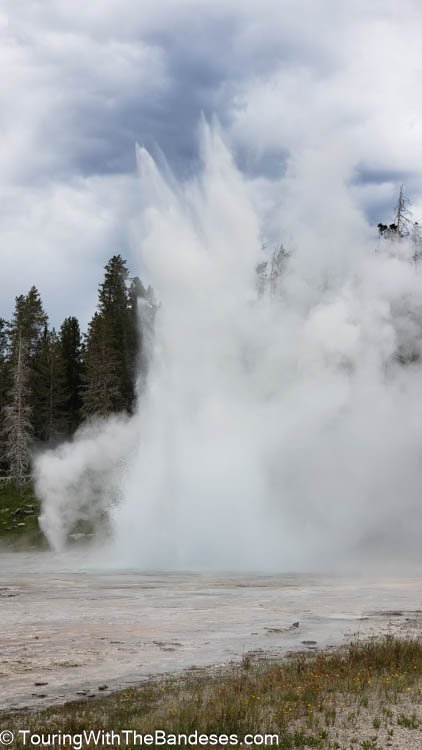
Grand Geyser is the largest predictable geyser in the world shooting 150 to 200 feet into the air. Unlike Old Faithful that goes off approximately every 90 minutes almost guaranteeing your chance to see it, Grand Geyser only goes off every 7 to 8 hours. We were lucky enough to catch it!
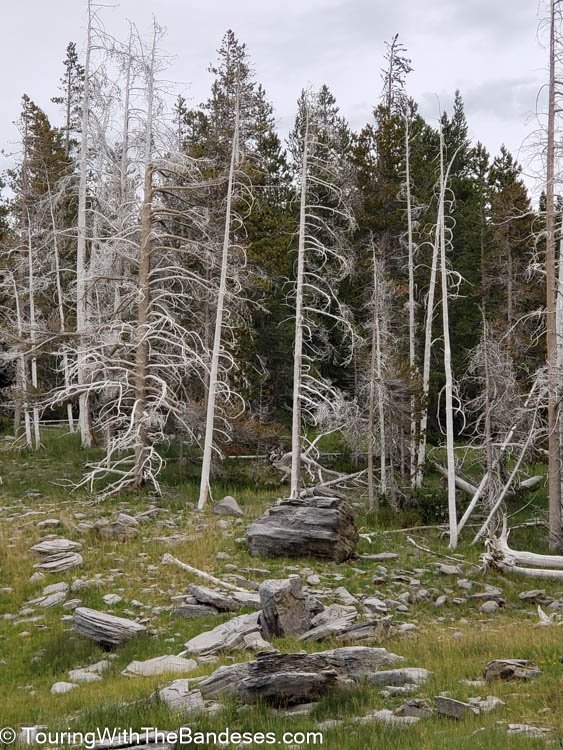
The sulfur from the water spraying out of the geyser has turned the surrounding trees white!
Most Likely to Be Found Camping – Spasmodic Geyser
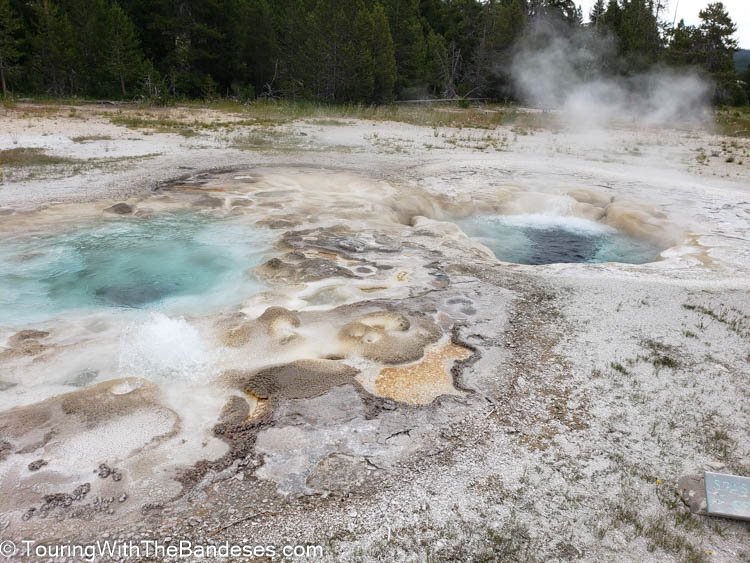
Tell me this one doesn’t look like melted roasted marshmallows.
The RV Park – Fishing Bridge RV Park
Yellowstone is so big, it’s super beneficial to get to stay inside the park. Unfortunately, the RV campground options are limited to Fishing Bridge RV Park. That’s not so bad until you learn they fill up nearly a year in advance! We were very fortunate to get a space for our stay.

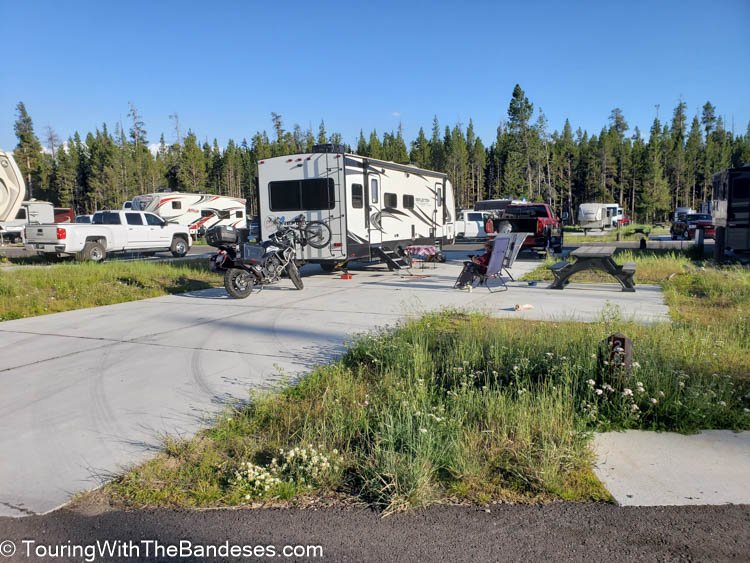
They work hard to let you know not to leave ANYTHING that has ANY kind of odor outdoors as bears are attracted to these smells. We never encountered a bear but did get a visit from this little guy.

Yellowstone is SOOOO massive that they don’t just have gas stations and convenience stores throughout, they have full size auto and even RV repair garages.
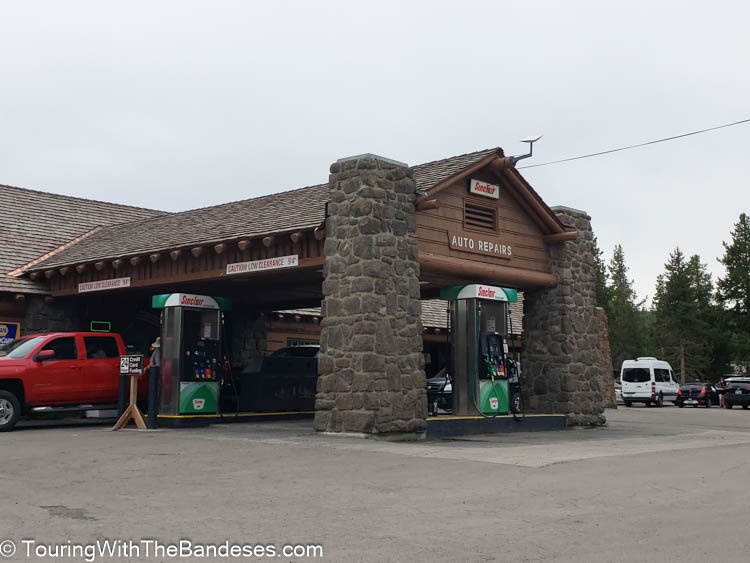
The Stats
Miles hiked at this stop – 28 miles
Animal Sightings to date – 24
